I only feel feelings in transit

‘I only feel feelings in transit’ is an immersive audio installation exploring simulated voyeurism as a means of performing masculinity. By reconfiguring parts of a disassembled automobile, the work gently parodies NPC machismo, where agency and subjecthood are restricted to filmified and gamified landscapes. Playing with the seduction of toys central to the collusion of masculine and capitalistic fantasies, ‘I only feel feelings in transit’ invites the audience to indulge in this contradictory ‘in betweenness’ via the simulation of a private interior existing in the gap between the momentum of their auditory experience and the illusion of a lack of control.
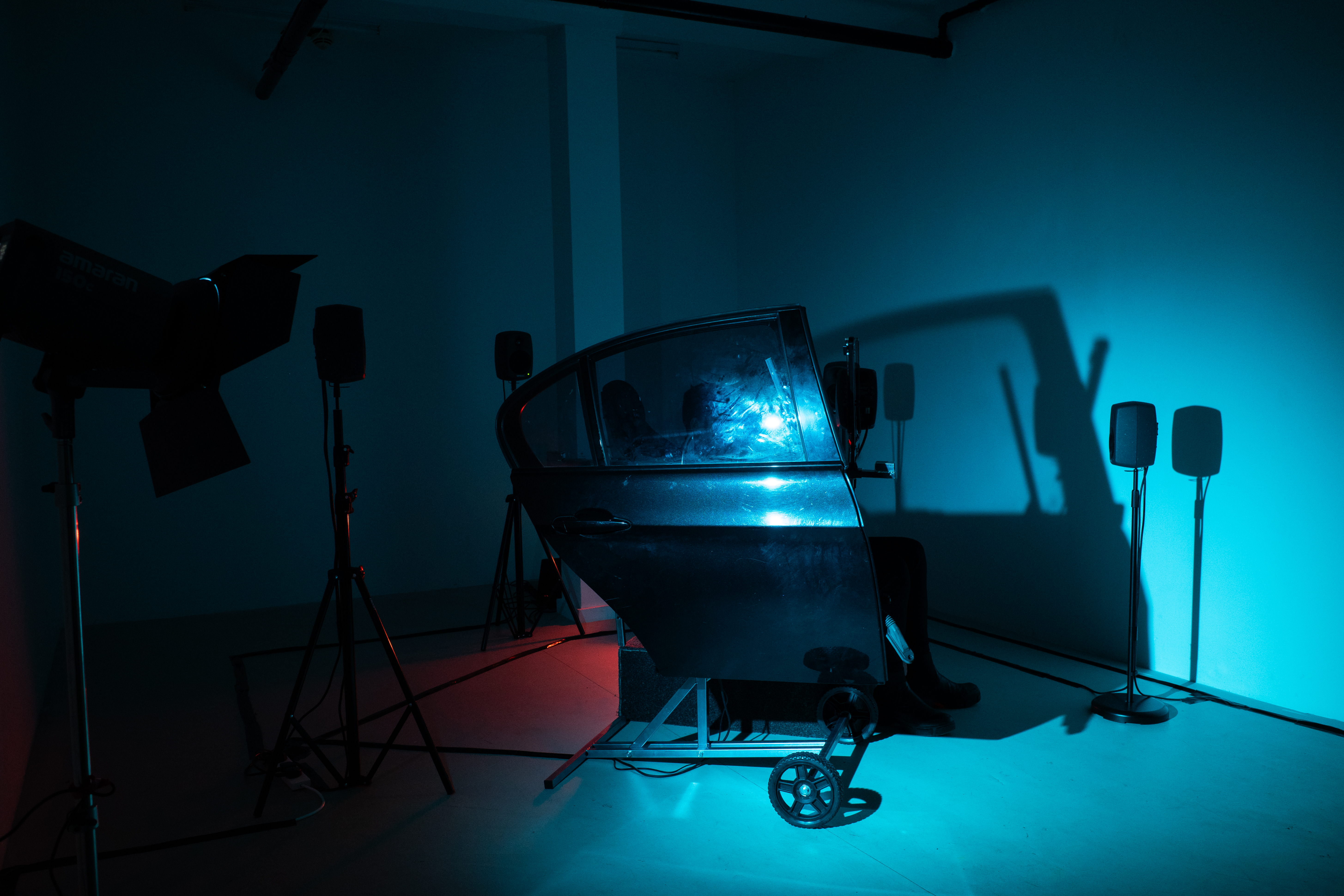
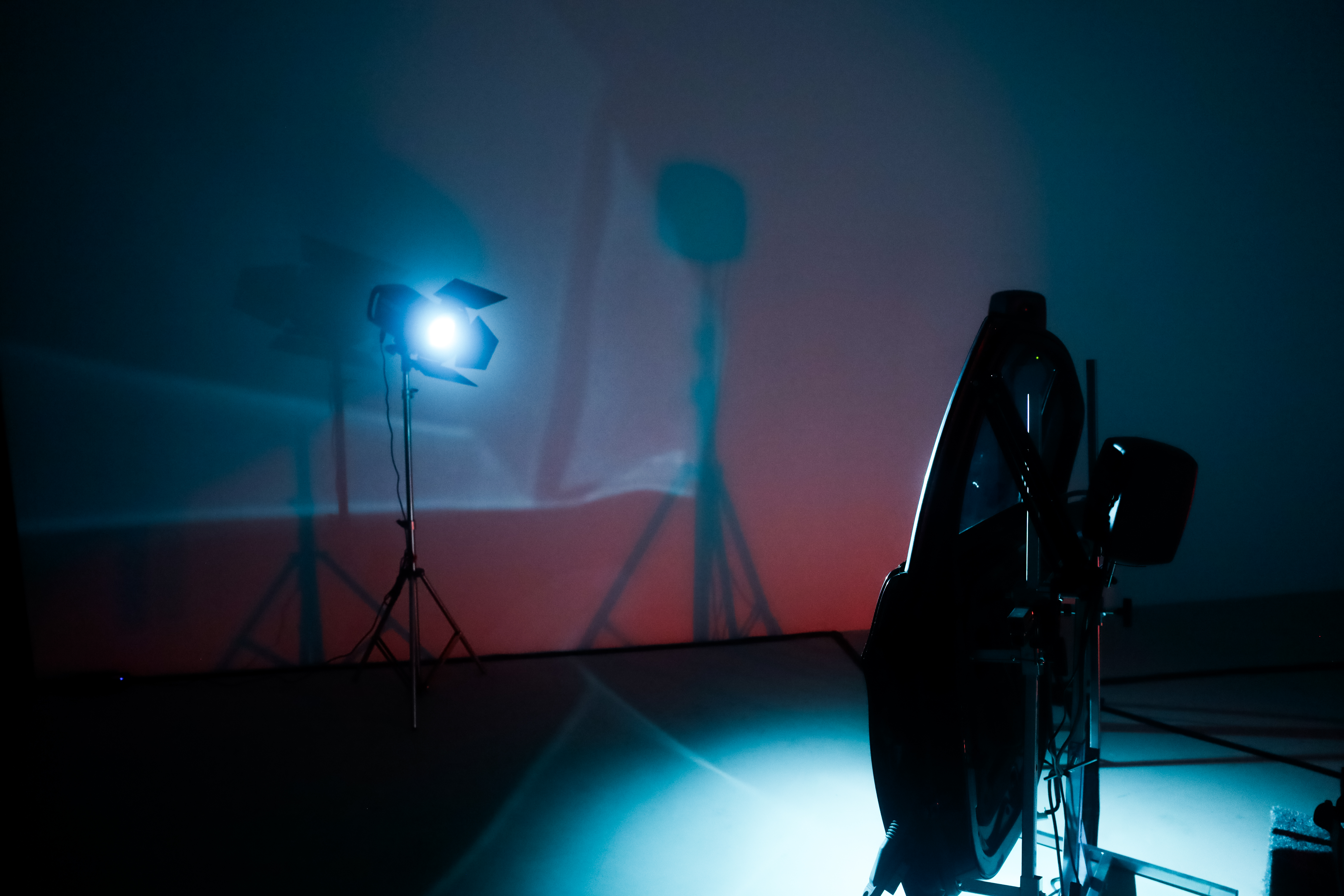
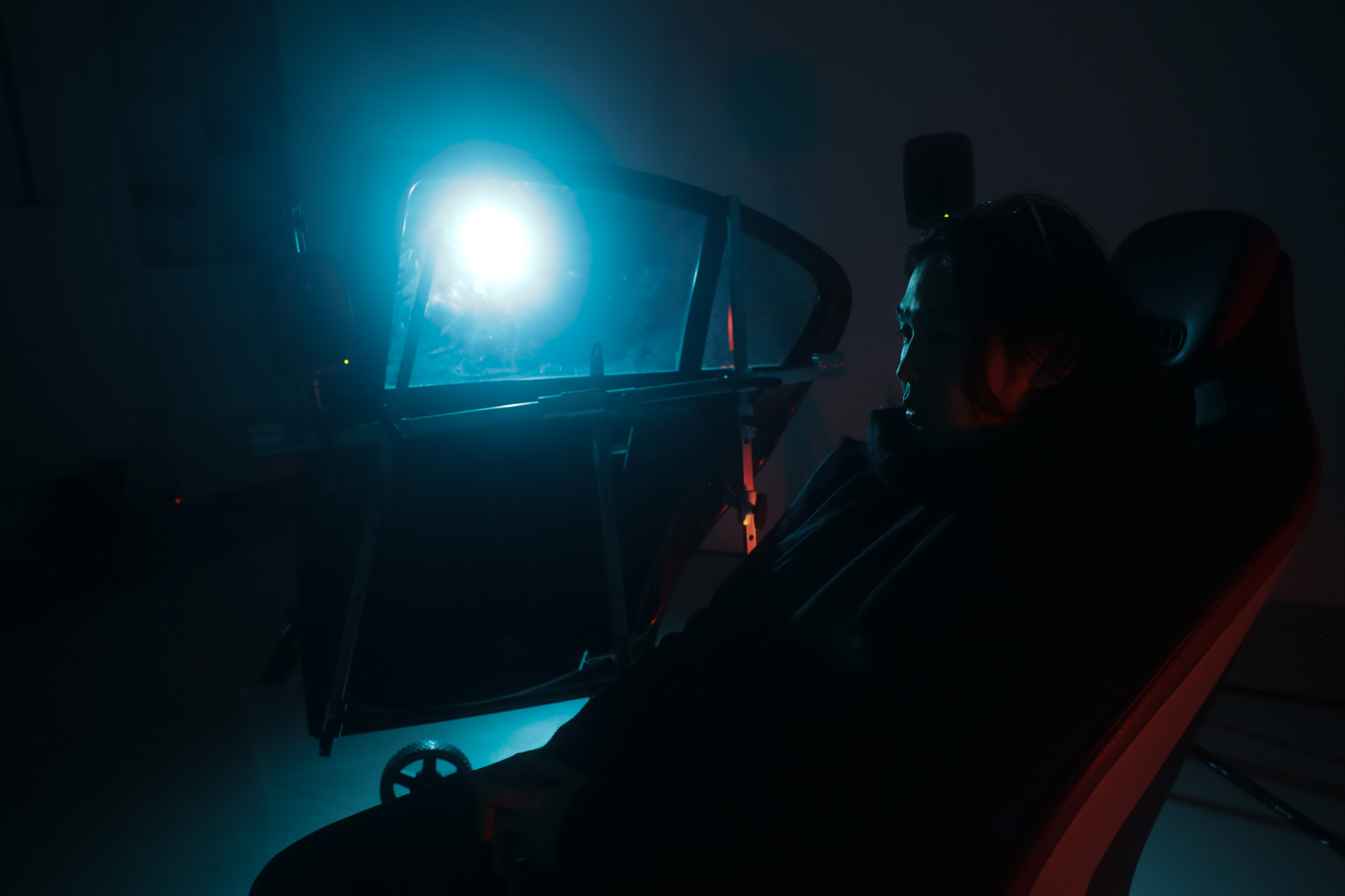

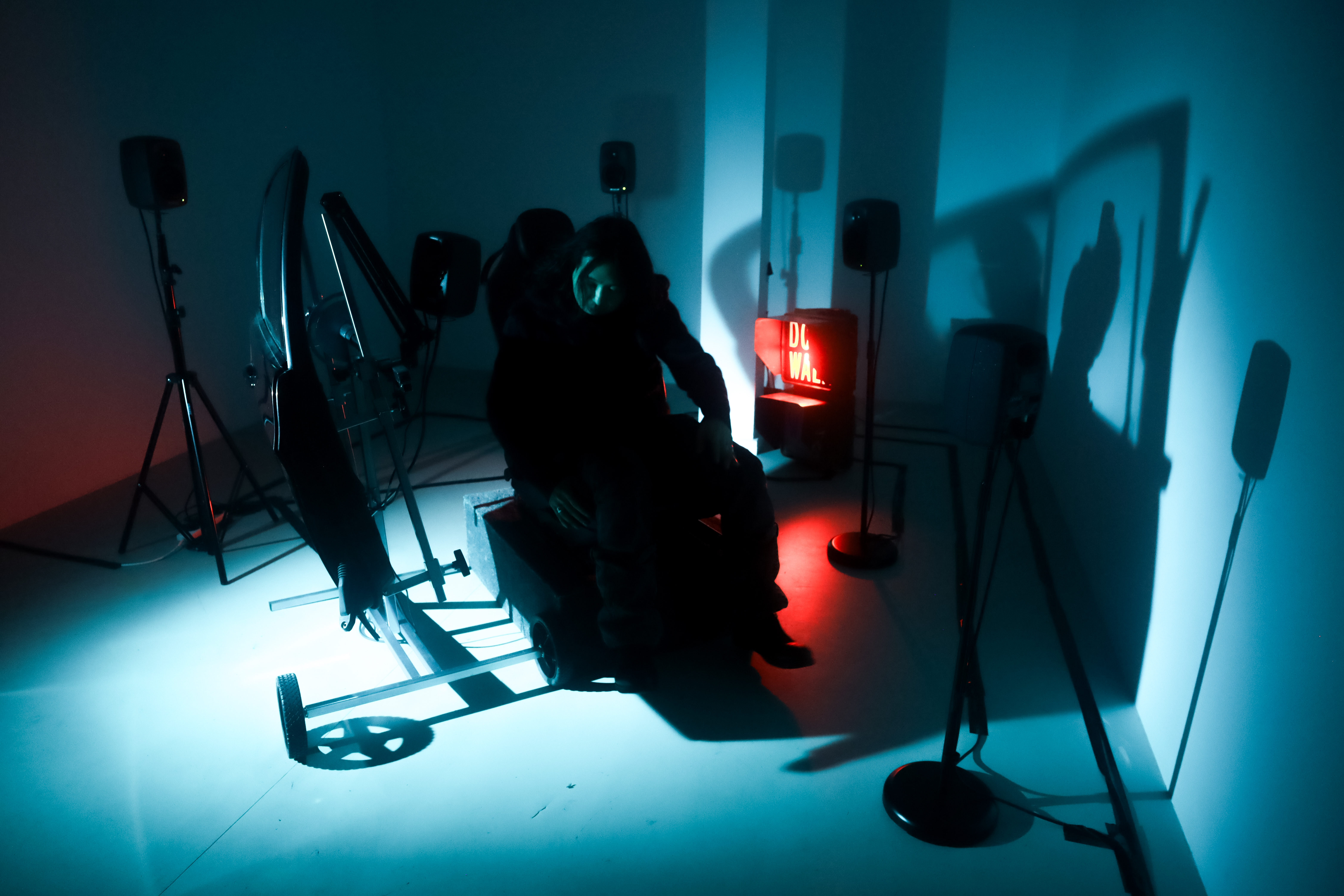
The immersive installation takes an interest in specifically exploring the liminal space of pre-shootout and approaching death moments within the fantasy of manospheric constructs. The piece draws influence from iconic cinematic depictions of the experience of driving, as well as the characterisation of the ‘literally me’ characters that have emerged as central figures of fantasy within the manosphere. Such characters include De Niro’s Travis Bickle from Scorsese’s Taxi Driver, Ryan Gosling’s unnamed character, ‘Driver’ from Drive, Christian Bale’s Patrick Bateman from American Psycho, as well as Joaquin Phoenix’ Arthur Fleck in Joker. Such characters, with certain exceptions, are often depicted as ostracised male figures on the fringes of society, unable to succeed nor fully participate as a result of social circumstances imposed upon them as a result of systematic institutional failings, thereby restricting available roles for them to occupy within society. This role is often akin to one of the NPC, the non-playable character in a video game, as they are often unimportant, unremarkable and ignored.
The trajectory of the story that often follows is that this male outcast finds himself or creates the circumstances in which his typically numbed, monotonous existence results in an emotional outburst paired with a climatic act of violence where the NPC transforms into a ‘main character’ type figure by taking actions that give the character a sense of agency. This may be performed through a heroic sacrificial act, or a moment in which a system of oppression is resisted, and is often combined with a blazing destructive climatic shootout or similar act of violence. The aftermath of such heroic, violent moments are also further romanticised within contemporary digital culture and the manosphere as evident in the the tik tok trend or meme format: ‘the masculine urge to bleed out…’ accompanied with solitary, liminal imagery of what might be a night scene of a park bench under a street light covered in snow. This moment that exists as a post-heroism outburst leading to the hero bleeding out, awaiting death has also been cemented within this space of cinema, with iconic examples such as Agent K bleeding out in the snow to evolving synthesiser pads in Hans Zimmer’s rendition of Vangelis’ Tears in the rain in the final scene of Blade Runner 2047.
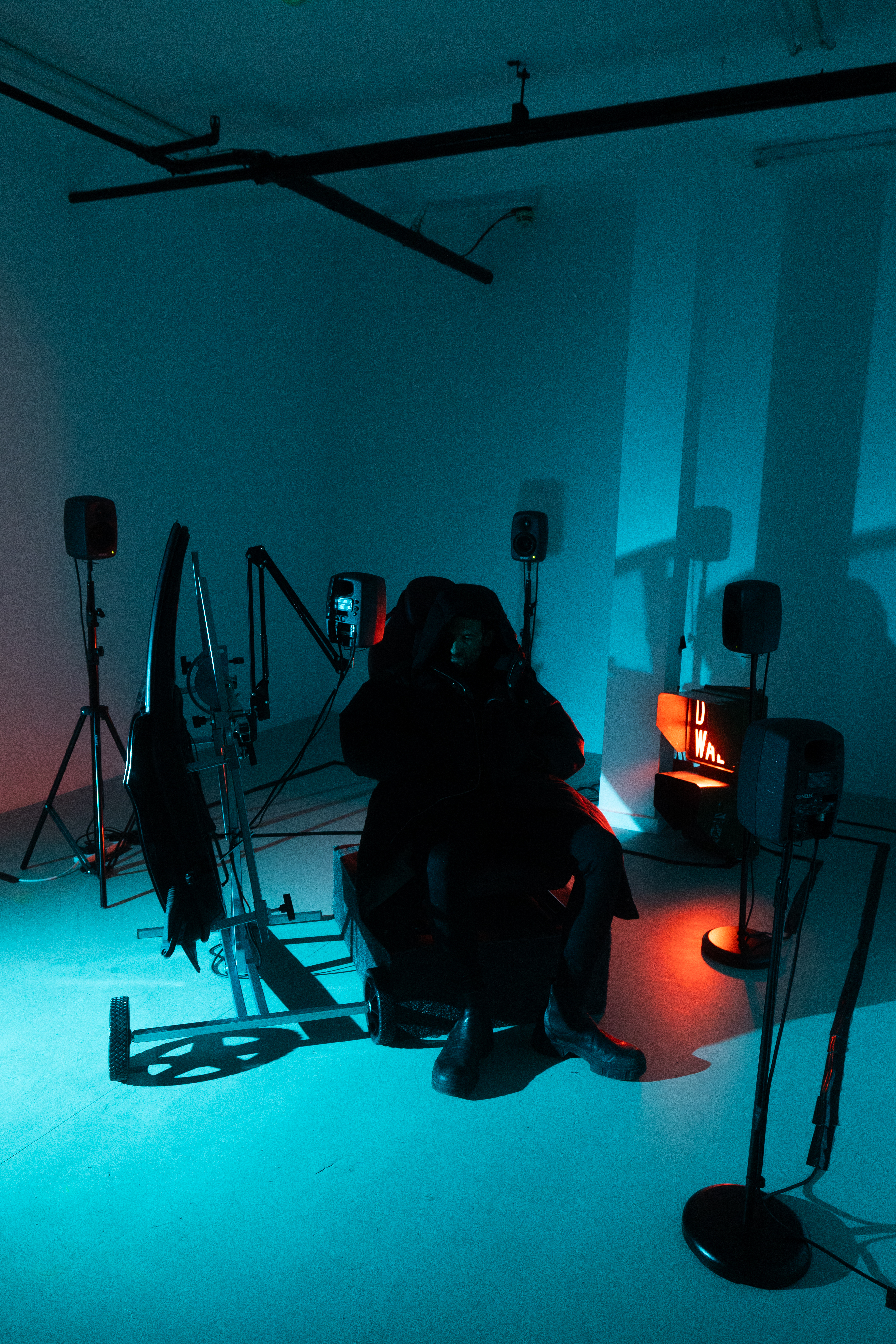
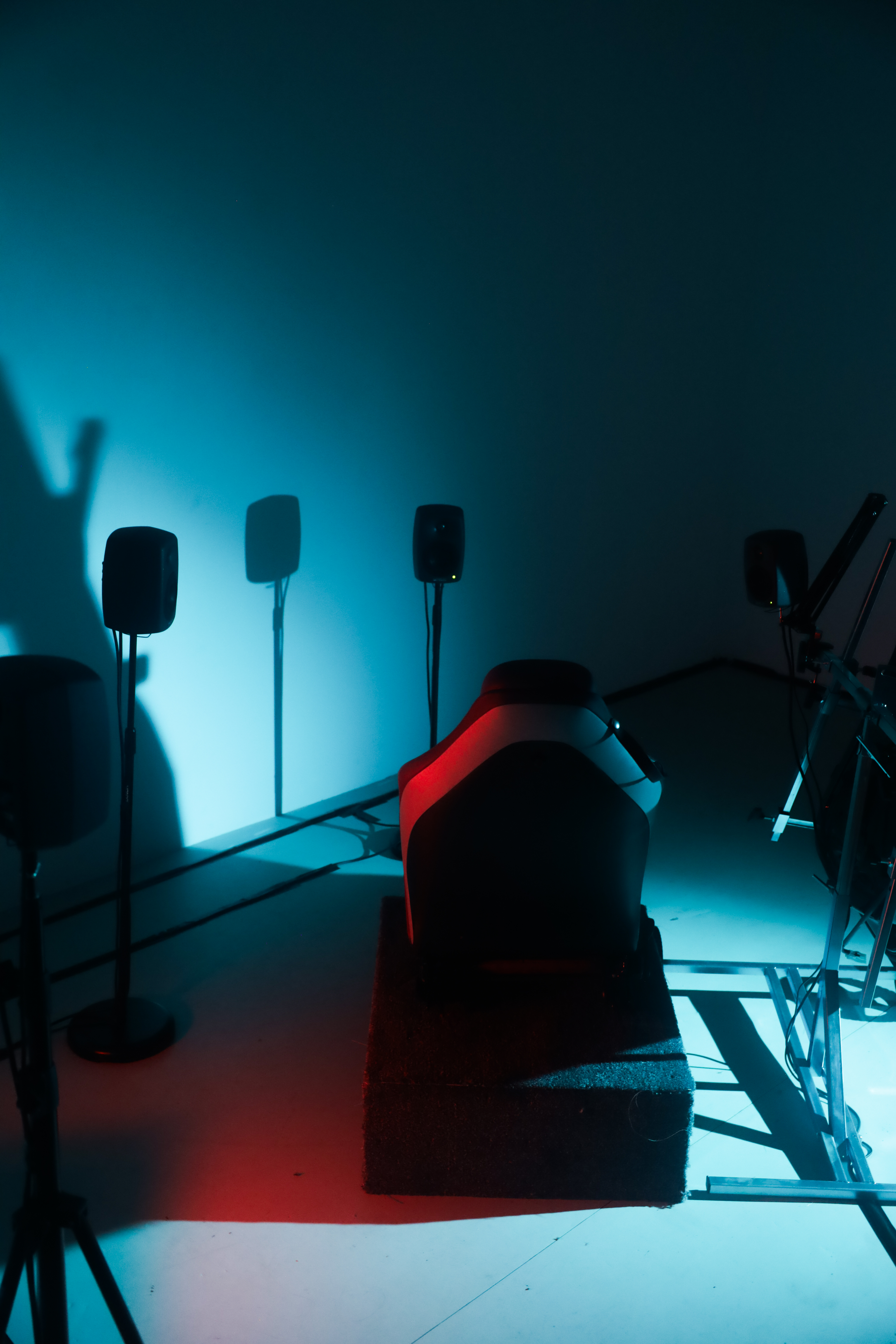
In both the moment preceding the climactic act of violence and the moment that immediately follows, the male figure is often depicted with a sense of intense conviction and fearlessness, giving the actions that complete the transformation a type of seductive momentum. ‘I only feel feelings in transit’ attempts to suspend the sensation of these moments by creating it’s own form of motion through the use of original music and field recordings evocative of various times and spaces. Such include isolated pigeon flutterings placed alongside footsteps in the midst of rain that transition to tape clicks indicating changing of channels on the radio, followed by driven baselines over the sounds of distant waves crashing.
The notion of artifice is central to the experience of the immersive installation through the transparency that the audience is presented with as the installation introduces and exposes all the elements of the piece similarly to the approach of a ‘film set’. With all components that comprise of the experience visible, the audience is invited to participate in the set and the simulation of the experience by sitting in the single seat available, thus activating the installation by performing the role of the passenger character. The notion of agency is explored within the work through this ‘space’ of participation, as the only directive of subjection and sense of momentum in the time based element of the work comes from the sound and music. With an entirely static environment designed as a set, the lack of visual change, and the only sense of movement coming from sound based elements, the audience is invited to perform the greater task of ‘performing’ the suspension of disbelief in the experience in comparison to level of immersion in watching characters in a film. In this particular first person sense of distance the audience has within the installation, the audience is ultimately asked to engage with the experience of cinema in a different format; as the audience is allowed to assume the role of the character experience privately through the body, within the physical vessel of artifice, is thus allowed to be swept by the experience in a way different to watching a film.
The notion of artifice is central to the experience of the immersive installation through the transparency that the audience is presented with as the installation introduces and exposes all the elements of the piece similarly to the approach of a ‘film set’. With all components that comprise of the experience visible, the audience is invited to participate in the set and the simulation of the experience by sitting in the single seat available, thus activating the installation by performing the role of the passenger character. The notion of agency is explored within the work through this ‘space’ of participation, as the only directive of subjection and sense of momentum in the time based element of the work comes from the sound and music. With an entirely static environment designed as a set, the lack of visual change, and the only sense of movement coming from sound based elements, the audience is invited to perform the greater task of ‘performing’ the suspension of disbelief in the experience in comparison to level of immersion in watching characters in a film. In this particular first person sense of distance the audience has within the installation, the audience is ultimately asked to engage with the experience of cinema in a different format; as the audience is allowed to assume the role of the character experience privately through the body, within the physical vessel of artifice, is thus allowed to be swept by the experience in a way different to watching a film.